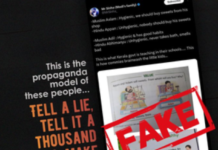VIKAS DATTA
Fiction, by its very definition, is a make-believe world, populated by characters who spring from the imagination of the author, and draw their sustenance from the interest of the readers. We, the readers, merely spend some of our time gazing into a microcosm of a world that is sometimes like ours, or sometimes not.
Our view is something like, “…If we could fly out of that window hand in hand, hover over this great city, gently remove the roofs, and peep in at the queer things which are going on, the strange coincidences, the plannings, the cross-purposes, the wonderful chains of events, working through generations, and leading to the most outre results, it would make all fiction with its conventionalities and foreseen conclusions most stale and unprofitable.”
That was Sherlock Holmes talking to his companion, Dr John Watson, in “A Case of Identity” (from “The Adventures of Sherlock Holmes”). What makes it paradoxical is that Holmes is seemingly breaking the boundaries of his frame of existence to weigh in on the reality-fiction relationship.
But what happens when characters transgress their fictional status to address their audience of readers. Then, we have a “Breaking the Fourth Wall” situation. The term actually originates from visual manifestations of culture, especially drama, where an imaginary — and transparent — “wall” separates the audience and actors, who go about as if they are not being seen.
This phenomenon has gone to other forms too, such as films and TV shows, but especially, some forms of literature too. In this, the characters seem unaware that they are fictional characters, and that the readers are observing and closely following them, to reach out to them, or for that matter, their creator. The purpose is usually comic, but can be serious too, if there is some mental condition or some sort of existential crisis that crops up.
Let us see some examples of “Breaking the Fourth Wall” in the wider realm of literature.
It is not a very recent phenomenon — Shakespeare’s characters often addressed the audience. So did the protagonists of Ancient Greek theatre — right from when the concept took hold, or possibly, even before.
In our times, even comics such as “The Beano” and “Dandy” are good examples, and even, the Franco-Belgian comic tradition was replete with it, say, “Achille Talon” (“Walter Melon” in English) or “Philemon”, but especially, “Tintin”.
We have the intrepid boy reporter winking at his readers near the end of “King Ottokar’s Sceptre” (1938-39), informing them at the end of “The Secret of the Unicorn” (1942) — much to the surprise of Captain Haddock — that the next part of the adventure will be told in “Red Rackham’s Treasure” (1943), and the cover of “The Castafiore Emerald” (1962) has Tintin in the foreground, looking directly at the reader, with a smile and a finger to his lips.
A lot of what Snowy says in the series is breaking the fourth wall — or for the reader’s benefit because the other characters can’t hear him. At one point, he looks at the reader and says “I could have told them that. But nobody would have listened to me!”
In “proper” literature, the phenomenon predates Shakespeare.
Instances can be seen in Dante’s “The Divine Comedy” (1320), where the poet, as a narrator, addresses the reader at least 18 times, all through his journey across Hell, Purgatory and Heaven, Chaucer’s “The Canterbury Tales” (c.1400) and then more recognisably in the second part (1615) of Cervantes’s “Don Quixote”.
The sequel features the Man of La Mancha, the author, fans of the book and a fake sequel written by another man, leading to our hero having to track down the Don Quixote from the fake sequel to get him to sign away his rights to the name/concept, in order that the real author can write a real sequel.
It addresses the issue of a character understanding that he is written about, and it is assumed that Spanish readers — and the characters — are familiar with the first part, as well as the actually published, fraudulent sequel.
Jane Austen’s “Northanger Abbey” (1818) is a pre-modern example, with the narrator declaiming upon the significance of reading novels.
“I will not adopt that ungenerous and impolitic custom so common with novel-writers, of degrading by their contemptuous censure the very performances, to the number of which they are themselves adding — joining with their greatest enemies in bestowing the harshest epithets on such works, and scarcely ever permitting them to be read by their own heroine, who, if she accidentally takes up a novel, is sure to turn over its insipid pages with disgust. Alas! If the heroine of one novel be not patronised by the heroine of another, from whom can she expect protection and regard?”
The 20th century was when the phenomenon came into its own, and for some reason, classic crime fiction saw a lot of it.
A prominent example is the superlative “locked room mystery”, John Dickson Carr’s “The Hollow Man” (1935) where one chapter consists of Dr Gideon Fell giving a lecture on examples of such crimes in fiction. Asked by his interlocutor what relevance this has to the situation at hand, he says: “Because we’re in a detective story, and we don’t fool the reader by pretending we’re not.”
Edmund Crispin’s quirky Oxford English Language and Literature Professor — and part-time amateur sleuth — Gervase Fen, in his nine appearances in comic detective novels and two short story anthologies, is well aware that he’s in a novel, and doesn’t hesitate to say so regularly throughout the series.
In “The Moving Toyshop” (1946), considered to be the series’ high point, a character asks our hero why he is on the left side, and he retorts that after all (Victor) Gollancz is publishing them, in a shout-out to the publisher’s political proclivities.
Then, the narrator in C.S. Lewis’s seven-volume “The Chronicles of Narnia” (1950-56), a remarkable fantasy story for children, and a religious allegory for more mature readers, uses personal pronouns to refer to the readers and himself.
Stephen King, in his “The Dark Tower” series (1982-2004), freely uses this device — he himself acts as a character and is able to assist other characters.
Also, before the epilogue of the eighth and last book, “The Dark Tower” (2004), he speaks to the reader in “Coda”, saying that the story ended perfectly without an epilogue, where Roland finally enters the tower, and that they should put the book down without reading it.
And then, Jasper Fforde’s ‘Thursday Next’ comic fantasy series, which is chock full of meta-levels to the extent that sometimes the mind reels, features a scene in “Something Rotten” (2004), where the feisty, irrepressible heroine, Thursday, is about to get intimate with her newly uneradicated husband Landen Park-Laine, but suddenly stops and says she can’t go ahead as so many people are watching. After he reminds her she’s not a character in a book, she apologises and says she’s spent too much time in the BookWorld (you will have to read the series to find what this is).
Then, there is the galactic tyrant Emperor Zhark, a creation of a friend of Thursday’s husband, and intended to serve as an example of the worst science fiction writing, but a (mostly) dependable ally of our heroine.
Not only does he manage to cross over and have a few words with his creator, who is planning to bump him off spectacularly, but he also manages to renegotiate his fictional contract to, among other perks, provide for more detailed descriptions of his first appearance.
There are more examples but at this point, readers should think if they identify so much with a work of fiction, can at some level, somewhere, the characters feel the same on the other side? (IANS)














